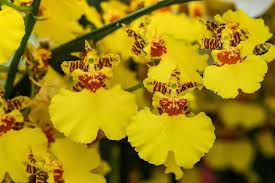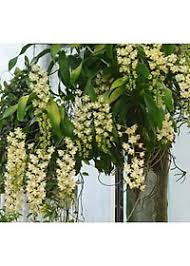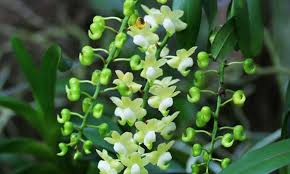
Dancing Lady Orchids, scientifically known as *Oncidium*, are a captivating choice for both novice and experienced orchid enthusiasts. With their striking flowers that resemble a dancing figure, they can bring vibrant color and elegance to any indoor garden. However, despite their beauty, many people encounter challenges when cultivating these lovely plants at home. Understanding common mistakes made in their care can significantly improve your success in growing these orchids. This comprehensive guide will explore the frequent pitfalls in growing Dancing Lady Orchids and provide tips to avoid them.
## 1. Choosing the Wrong Potting Medium
### Understanding Potting Mixes
One of the most critical factors for growing *Oncidium* orchids is selecting the right potting medium. These orchids are epiphytes, meaning they naturally grow on trees and require a specialized medium to thrive.
### Common Mistakes in Potting Medium
– **Using Standard Potting Soil**: Many beginners mistakenly use standard potting soil, which retains too much moisture and can lead to root rot. Instead, opt for a well-draining mix specifically designed for orchids, such as a blend of bark, perlite, and charcoal.
– **Neglecting Air Circulation**: *Oncidium* orchids thrive in a medium that allows for good air circulation around the roots. If the potting mix is too dense, it can suffocate the roots, leading to poor growth.
### Recommended Solutions
– **Commercial Orchid Mixes**: Purchase pre-packaged orchid mixes that contain the right balance of materials for drainage and aeration.
– **Custom Blends**: If you prefer to make your own mix, combine pine bark, sphagnum moss, and perlite to create a well-aerated environment for your *Oncidium* orchids.
## 2. Overwatering
### The Importance of Proper Watering
Watering is crucial for the health of *Oncidium* orchids, but it is also one of the most common areas where mistakes occur.
### Common Overwatering Mistakes
– **Watering on a Schedule**: Many growers water their orchids on a fixed schedule, which may not correspond to the plant’s actual needs. Factors such as humidity, temperature, and light can affect how quickly the potting medium dries out.
– **Ignoring Pot Drainage**: Failing to ensure that pots have adequate drainage holes can lead to stagnant water, creating a breeding ground for root rot.
### Recommended Solutions
– **Check Moisture Levels**: Always check the moisture level of the potting medium before watering. A good rule of thumb is to wait until the top inch of the medium is dry.
– **Use Pots with Drainage**: Ensure that your pots have sufficient drainage holes and consider using terracotta pots that allow for moisture evaporation.
## 3. Inadequate Lighting
### Understanding Light Requirements
Dancing Lady Orchids thrive in bright, indirect sunlight, but many growers misjudge their lighting needs.
### Common Mistakes in Lighting
– **Too Much Direct Sunlight**: Exposing *Oncidium* orchids to harsh, direct sunlight can scorch their leaves and lead to poor health.
– **Insufficient Light**: Conversely, placing orchids in low-light conditions can hinder their growth and blooming potential.
### Recommended Solutions
– **Filtered Light**: Position your orchids near east or west-facing windows, where they can receive bright, filtered light. Use sheer curtains to diffuse direct sunlight if necessary.
– **Rotate the Plant**: Regularly rotate your orchids to ensure even light exposure on all sides, promoting balanced growth.
## 4. Incorrect Fertilization
### The Role of Fertilization
Fertilizing is essential for providing the nutrients that *Oncidium* orchids need to thrive, but improper fertilization can cause more harm than good.
### Common Fertilization Mistakes
– **Over-Fertilization**: Many growers tend to over-fertilize their orchids, which can lead to salt buildup in the potting medium and cause root damage.
– **Using the Wrong Type of Fertilizer**: Not all fertilizers are suitable for orchids. Using a standard houseplant fertilizer can lead to nutrient imbalances.
### Recommended Solutions
– **Use Orchid-Specific Fertilizers**: Opt for a balanced, water-soluble orchid fertilizer, such as a 30-10-10 formulation, that provides the necessary nutrients.
– **Dilute Fertilizer**: When fertilizing, dilute the fertilizer to half strength and apply it every 4-6 weeks during the growing season (spring and summer).
## 5. Ignoring Humidity Levels
### The Importance of Humidity
Humidity is a critical factor for the successful growth of *Oncidium* orchids, as they naturally thrive in humid environments.
### Common Mistakes Related to Humidity
– **Low Indoor Humidity**: Many homes, particularly those with central heating or air conditioning, have low humidity levels that can stress orchids.
– **Neglecting to Mist**: Some growers forget to mist their orchids or use a humidity tray, which can help maintain optimal humidity levels.
### Recommended Solutions
– **Monitor Humidity**: Use a hygrometer to monitor the humidity levels in your growing area. Aim for a humidity level between 40% and 70%.
– **Use Humidity Trays or Misting**: Place your orchids on humidity trays filled with water and pebbles or mist the leaves regularly to increase humidity around the plants.
## 6. Poor Air Circulation
### Understanding Air Circulation
Air circulation is vital for preventing fungal diseases and promoting healthy growth in *Oncidium* orchids.
### Common Mistakes Related to Airflow
– **Crowded Spaces**: Placing orchids too close together can restrict airflow, creating a humid environment that fosters disease.
– **Lack of Ventilation**: Not providing adequate ventilation in the growing area can lead to stagnant air, increasing the risk of fungal infections.
### Recommended Solutions
– **Space Out Plants**: Ensure there is enough space between each orchid to allow for proper airflow. Avoid overcrowding your plant shelves or windowsills.
– **Provide Ventilation**: Use fans or open windows to improve air circulation, especially in enclosed growing spaces.
## 7. Neglecting to Prune
### The Importance of Pruning
Regular pruning helps maintain the health and appearance of *Oncidium* orchids.
### Common Pruning Mistakes
– **Failure to Remove Dead Blooms**: Neglecting to cut back spent flower spikes can drain energy from the plant and inhibit future blooms.
– **Improper Cutting Techniques**: Many growers do not know where or how to prune correctly, leading to stress on the plant.
### Recommended Solutions
– **Cutting Spent Blooms**: Use sterilized scissors to cut back spent flower spikes to the base. This encourages new growth and flowering.
– **Trimming for Shape**: Regularly trim any yellow or damaged leaves to promote healthy growth and improve the plant’s appearance.
## 8. Improper Repotting
### Understanding Repotting Needs
Repotting is essential for the health of *Oncidium* orchids, but many growers either neglect this process or do it incorrectly.
### Common Repotting Mistakes
– **Repotting Too Frequently**: Some growers repot their orchids too often, which can stress the plant and disrupt root development.
– **Failing to Choose the Right Time**: Repotting during the wrong season can hinder the plant’s growth and lead to shock.
### Recommended Solutions
– **Repot Every 1-2 Years**: Generally, repot *Oncidium* orchids every 1-2 years or when the potting medium breaks down.
– **Choose the Right Time**: The best time to repot is in spring when the plant is actively growing.
## 9. Overlooking Pest and Disease Management
### The Importance of Vigilance
Pests and diseases can quickly devastate *Oncidium* orchids if not addressed promptly.
### Common Pest and Disease Management Mistakes
– **Ignoring Signs of Infestation**: Many growers overlook early signs of pests or disease, leading to larger infestations that are harder to control.
– **Using Inappropriate Treatments**: Using harsh chemicals can damage the plant rather than solve the problem.
### Recommended Solutions
– **Regular Inspections**: Regularly inspect your orchids for pests like aphids, spider mites, and scale. Look for signs such as sticky residue, discoloration, or webbing.
– **Organic Pest Control**: Use organic methods like neem oil or insecticidal soap to treat infestations, ensuring they are safe for orchids.
## 10. Lack of Patience
### The Importance of Patience in Orchid Care
Dancing Lady Orchids are not instant gratification plants; they require time and care to flourish.
### Common Mistakes Due to Impatience
– **Fretting Over Slow Growth**: Many growers become discouraged if their orchids do not bloom quickly or show slow growth, leading to excessive intervention.
– **Rushing the Bloom Cycle**: Trying to force an orchid to bloom out of season can stress the plant and result in poor blooms.
### Recommended Solutions
– **Be Patient**: Understand that orchids have natural growth cycles and may take time to adapt to their environment.
– **Trust the Process**: Give your orchids the care they need and trust that they will reward you with beautiful blooms when they are ready.
## Conclusion
Growing Dancing Lady Orchids at home can be a rewarding experience, but it comes with its challenges. By being aware of common mistakes—such as choosing the wrong potting medium, overwatering, inadequate lighting, incorrect fertilization, neglecting humidity, poor air circulation, failing to prune, improper repotting, overlooking pests, and lacking patience—you can significantly improve your chances of success.
With the right care, attention, and a bit
of patience, your *Oncidium* orchids can thrive and fill your home with their stunning floral displays. Happy gardening!


